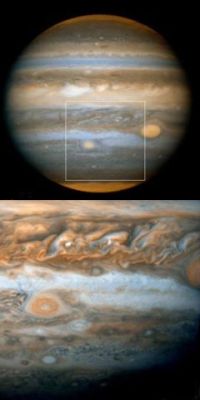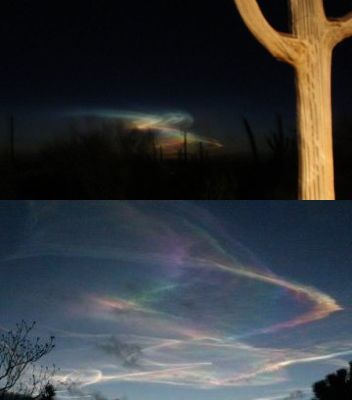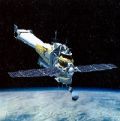I was very fortunate to have been on Rogers Dry Lake at Edwards AFB on the day that Crippen and Young arrived on the lakebed in STS-1. The landing happened so quickly that I was astonished. From the twin sonic booms overhead to the touchdown on the lake seemed almost instantaneous — but I shall never forget it. I purchased a button from a lakebed entrepreneur that said “I SAW A SPACESHIP LAND ON EARTH.”I attached the button to my old cowboy hat that I wore in the desert sun. I still have that button somewhere . . .
Commander John Young received his award in 1981, and Crippen’s award was overdue in my opinion. Congratulations Bob Crippen!
NASA — First Shuttle Pilot Crippen Gets Congressional Space Medal of Honor
 Former NASA astronaut Bob Crippen, pilot on the first space shuttle mission in 1981, has been honored with the nation’s highest award for spaceflight achievement, the Congressional Space Medal of Honor.
Former NASA astronaut Bob Crippen, pilot on the first space shuttle mission in 1981, has been honored with the nation’s highest award for spaceflight achievement, the Congressional Space Medal of Honor.
Yesterday evening, at a gala celebrating the 25th anniversary of the first Space Shuttle mission, Robert Crippen became the 28th astronaut in history to be awarded the Congressional Space Medal of Honor.
The surprise presentation by NASA Administrator Michael Griffin was made before the gathered audience at the National Air and Space Museum, including Crippen’s STS-1 commander and 1981 medal recipient John Young.
“This medal, awarded by the Congress of the United States, commemorates publicly what all of us who know Bob Crippen already understood: he is an authentic American hero,” said Griffin.
“It was such a surprise. I am totally overwhelmed,” said Crippen in a statement released after the ceremony. “Just look at the names of the people who are on the list. They are heroes in the truest sense of the word and I can’t believe someone would think to include me in such distinguished company. I’m so honored.”
The award commends astronauts whose efforts in space exemplify actions of tremendous benefit to mankind. The medal, which has also been given to astronauts who died in the line of duty, was last presented in 2004 to the crew of STS-107. The award was first given in 1978 to astronauts Neil Armstrong, Frank Borman, Pete Conrad, John Glenn, Alan Shepard, and posthumously to Virgil “Gus” Grissom.
Lemurs, those wide-eyed, active, monkey-like animals running around the island in the movie “Madagascar,” are known for their ability to leap. A robotic lemur being tested at NASA’s Jet Propulsion Laboratory moves more slowly, but might someday take its own giant leap – by going into space with astronauts.

 Hubble has sent back the clearest pictures yet of Jupiter’s new red spot.
Hubble has sent back the clearest pictures yet of Jupiter’s new red spot.  Former NASA astronaut Bob Crippen, pilot on the first space shuttle mission in 1981, has been honored with the nation’s highest award for spaceflight achievement, the Congressional Space Medal of Honor.
Former NASA astronaut Bob Crippen, pilot on the first space shuttle mission in 1981, has been honored with the nation’s highest award for spaceflight achievement, the Congressional Space Medal of Honor. From a vantage point approximately 1/100 of the distance from the Earth to the Sun ACE performs measurements over a wide range of energy and nuclear mass, under all solar wind flow conditions and during both large and small particle events including solar flares. ACE provides near-real-time solar wind information over short time periods. When reporting space weather ACE can provide an advance warning (about one hour) of geomagnetic storms that can overload power grids, disrupt communications on Earth, and present a hazard to astronauts.
From a vantage point approximately 1/100 of the distance from the Earth to the Sun ACE performs measurements over a wide range of energy and nuclear mass, under all solar wind flow conditions and during both large and small particle events including solar flares. ACE provides near-real-time solar wind information over short time periods. When reporting space weather ACE can provide an advance warning (about one hour) of geomagnetic storms that can overload power grids, disrupt communications on Earth, and present a hazard to astronauts. 
 April 4, 2006: Thirty-plus years ago on the moon, Apollo astronauts made an important discovery: Moondust can be a major nuisance. The fine powdery grit was everywhere and had a curious way of getting into things. Moondust plugged bolt holes, fouled tools, coated astronauts’ visors and abraded their gloves. Very often while working on the surface, they had to stop what they were doing to clean their cameras and equipment using large–and mostly ineffective–brushes.
April 4, 2006: Thirty-plus years ago on the moon, Apollo astronauts made an important discovery: Moondust can be a major nuisance. The fine powdery grit was everywhere and had a curious way of getting into things. Moondust plugged bolt holes, fouled tools, coated astronauts’ visors and abraded their gloves. Very often while working on the surface, they had to stop what they were doing to clean their cameras and equipment using large–and mostly ineffective–brushes.  A Russian communications satellite appears to have been struck by “a sudden external impact”. Its operators say the extent of the damage caused means the satellite will be sent into “space disposal orbit”.
A Russian communications satellite appears to have been struck by “a sudden external impact”. Its operators say the extent of the damage caused means the satellite will be sent into “space disposal orbit”.